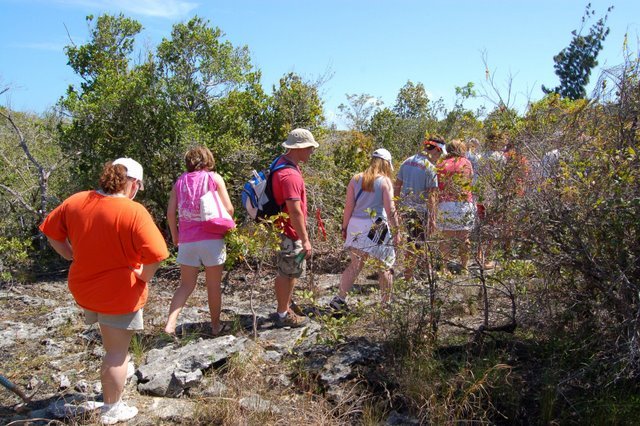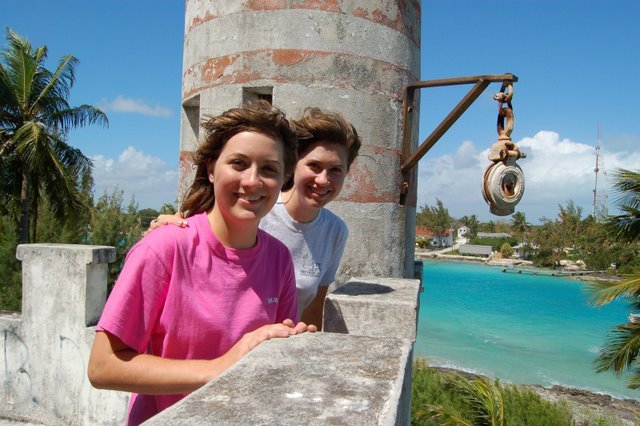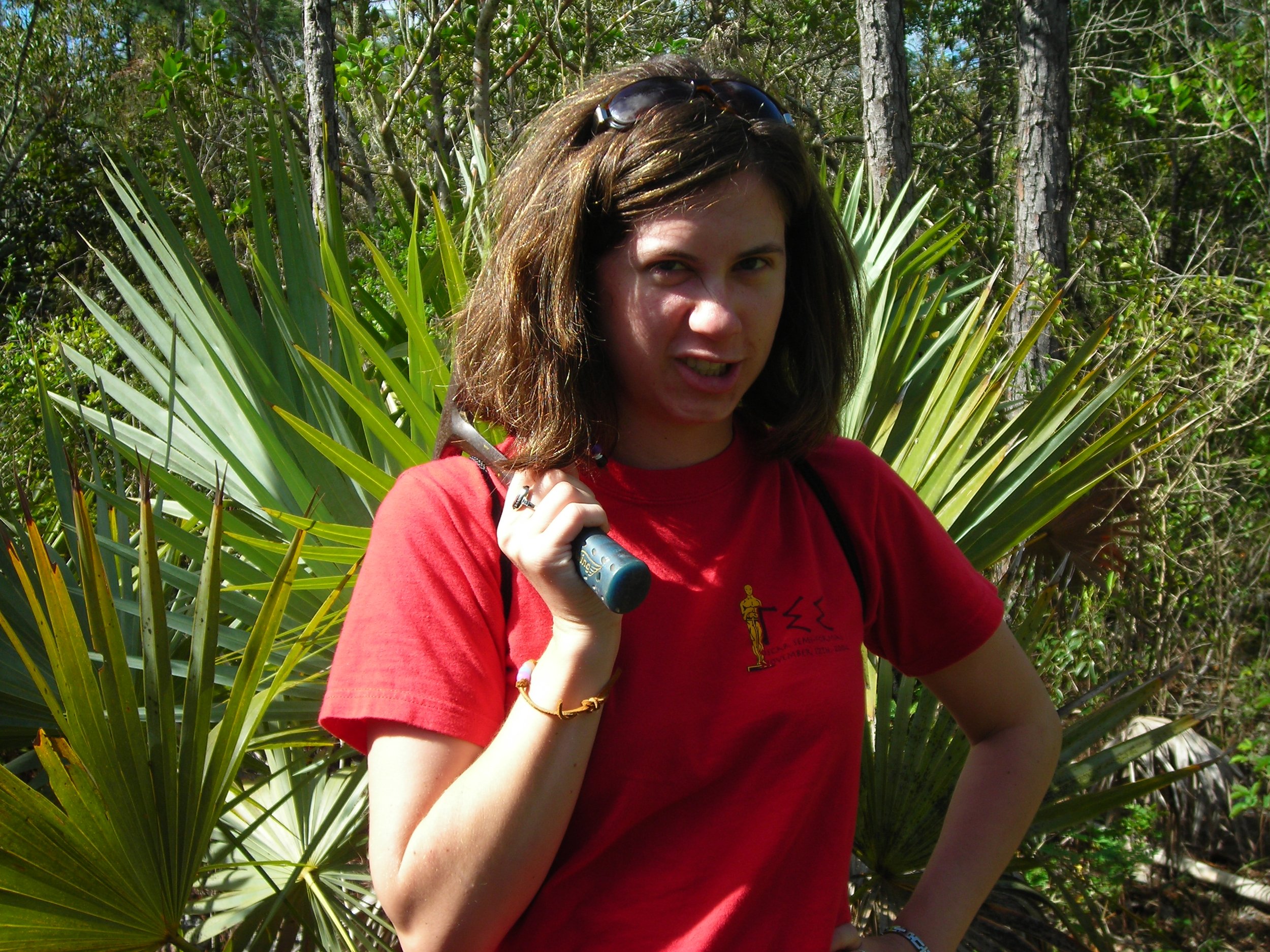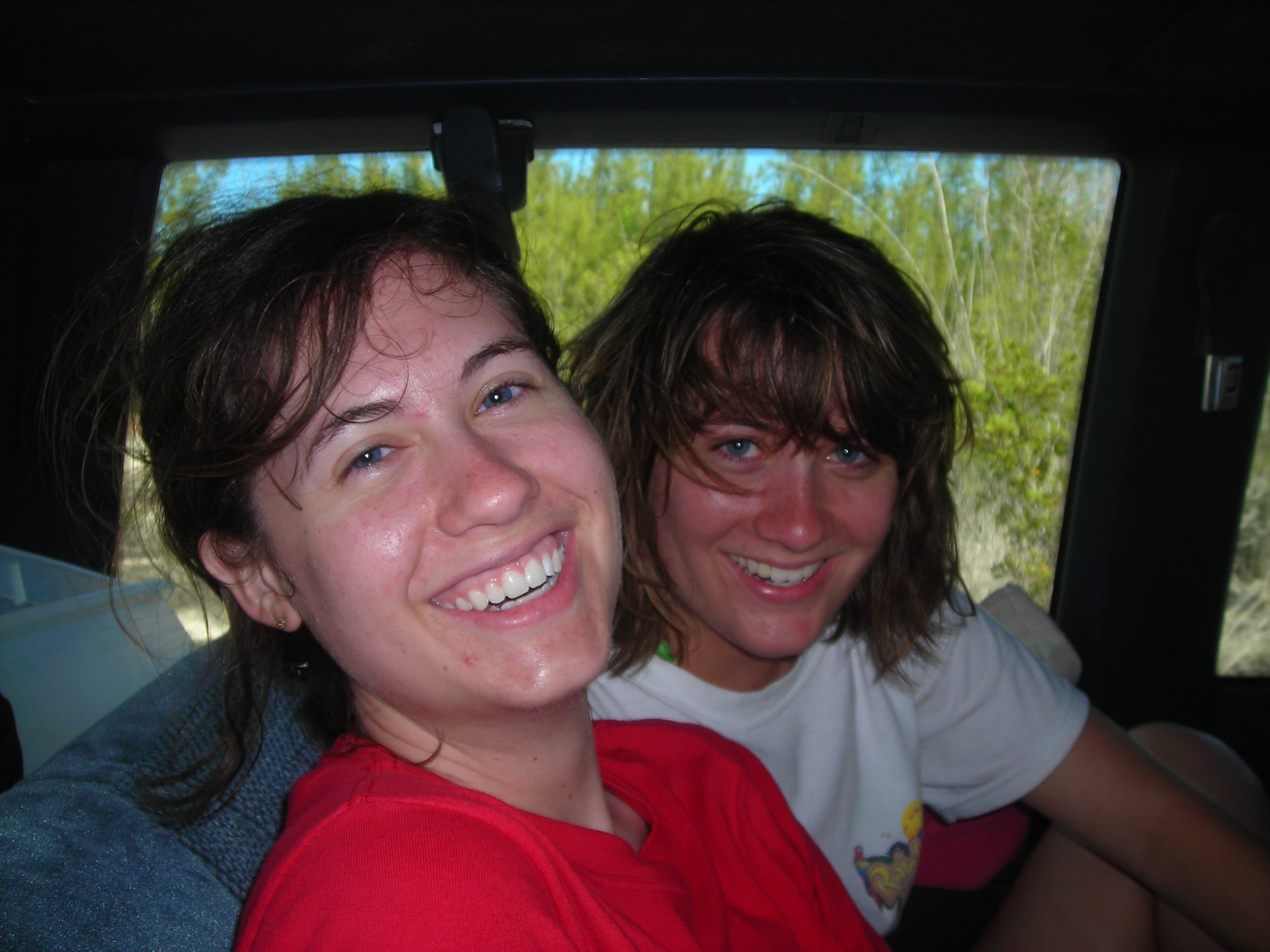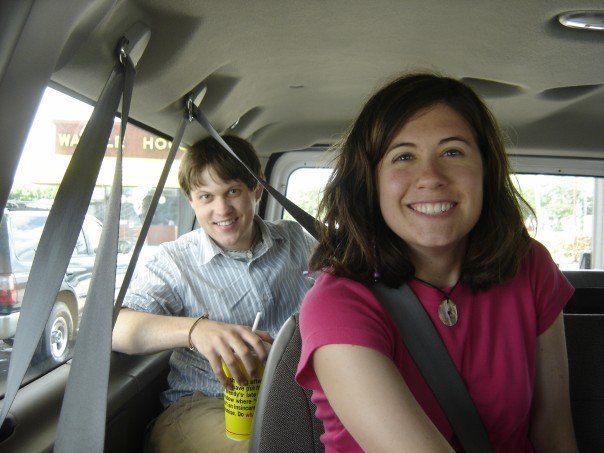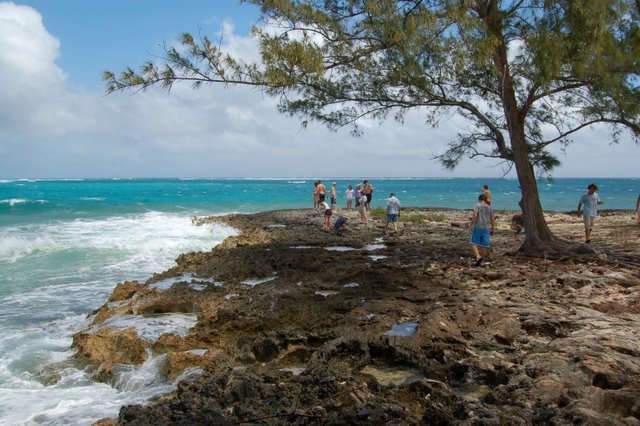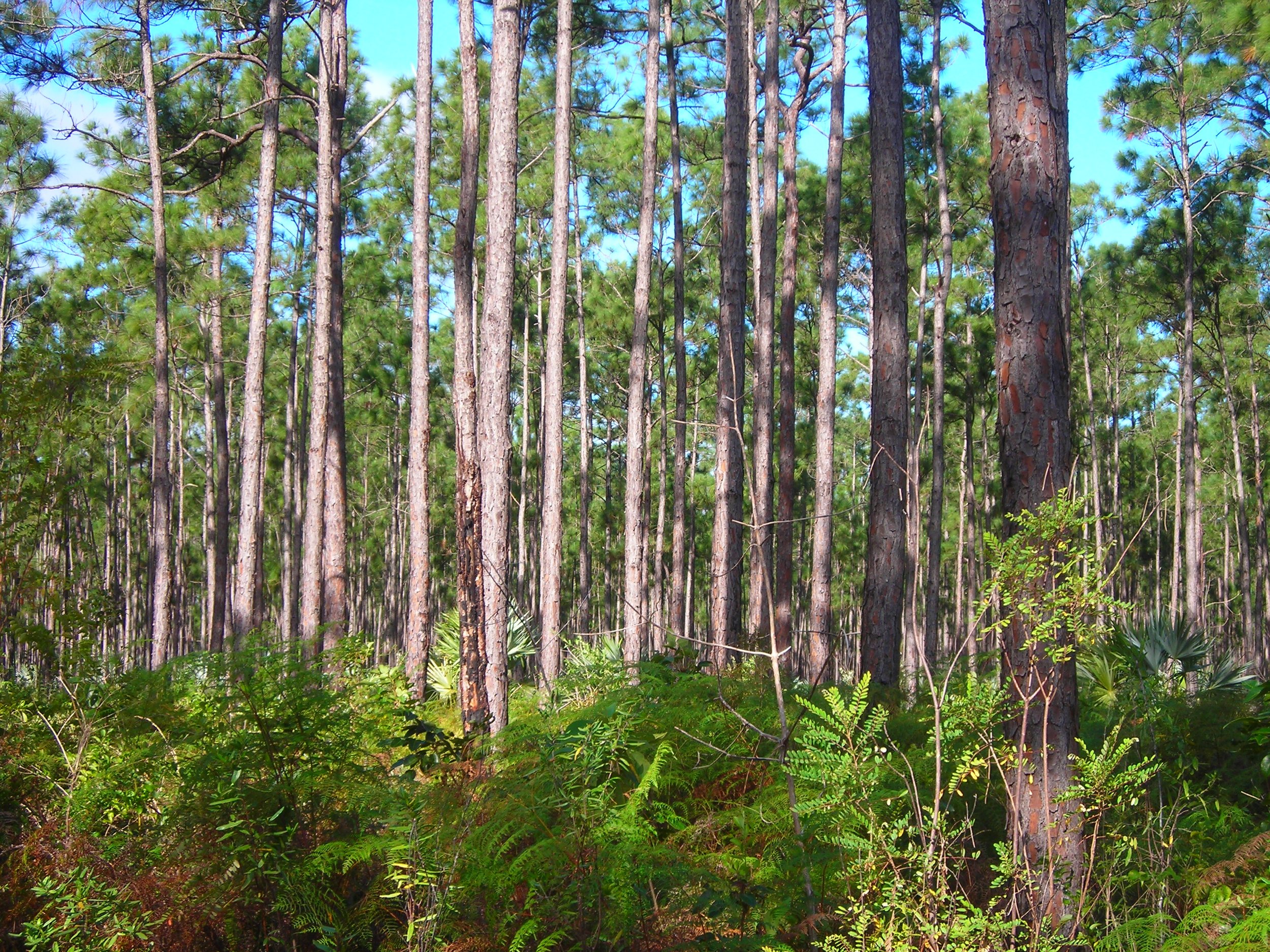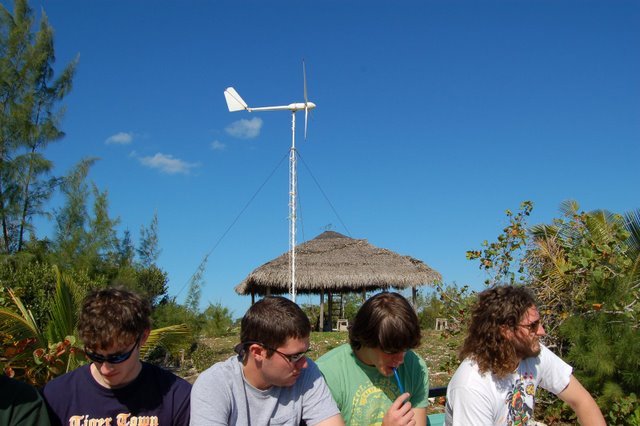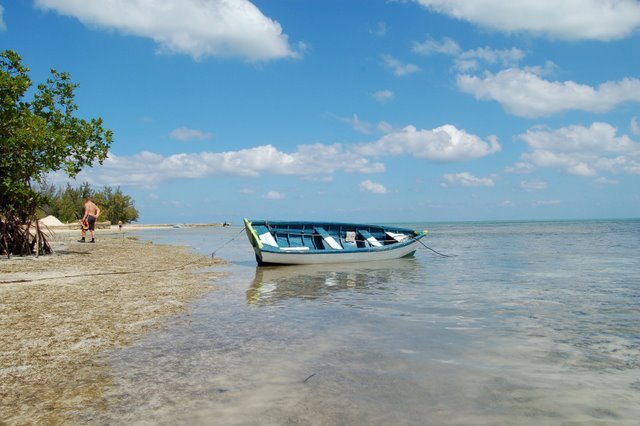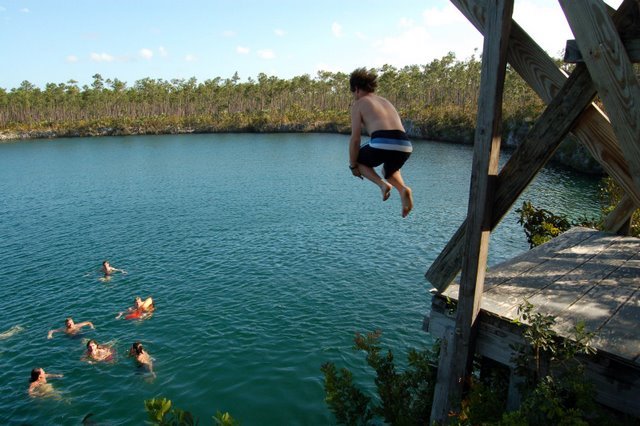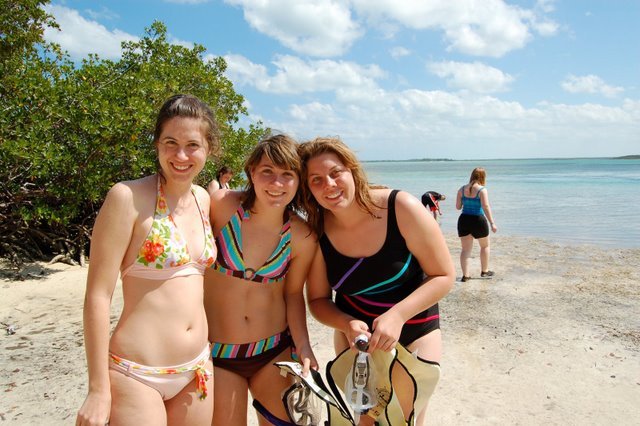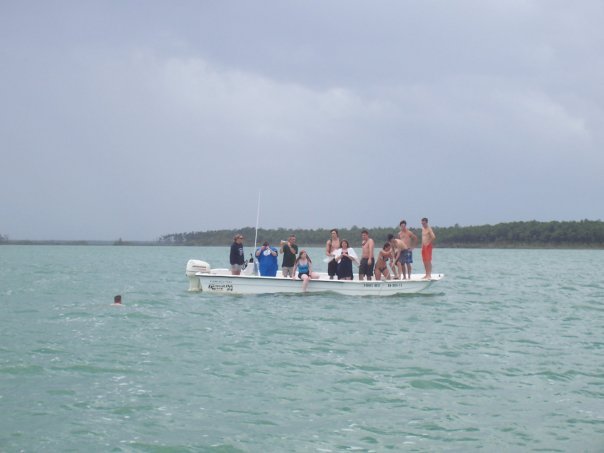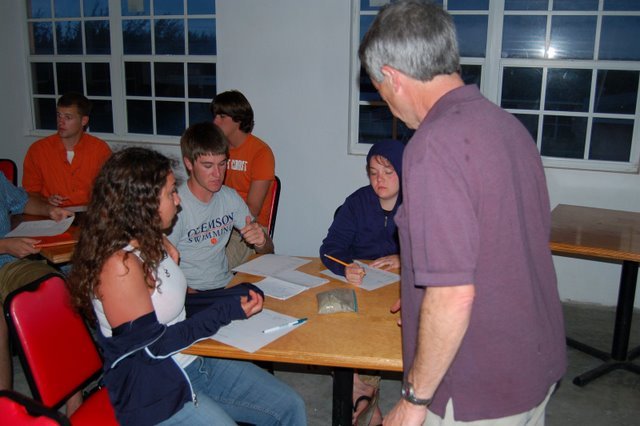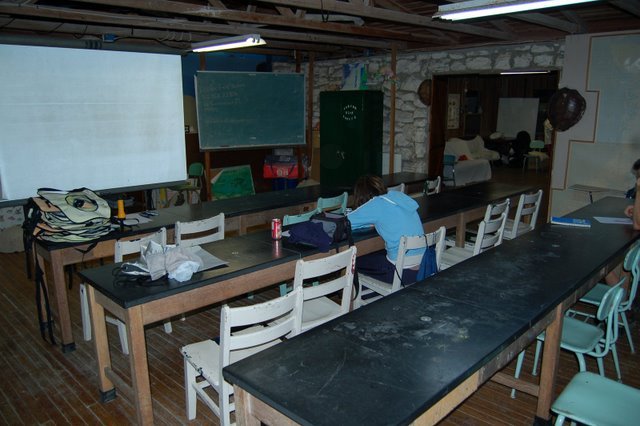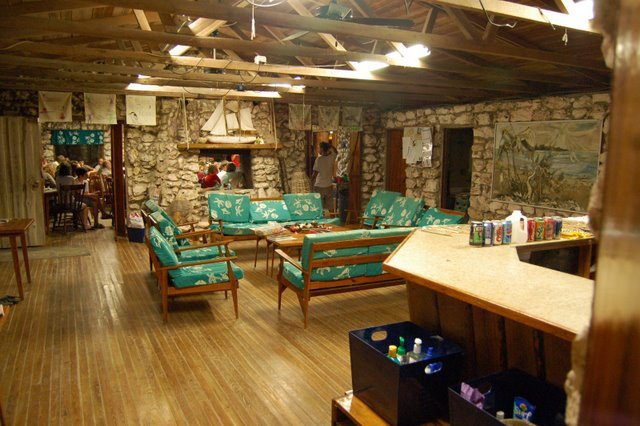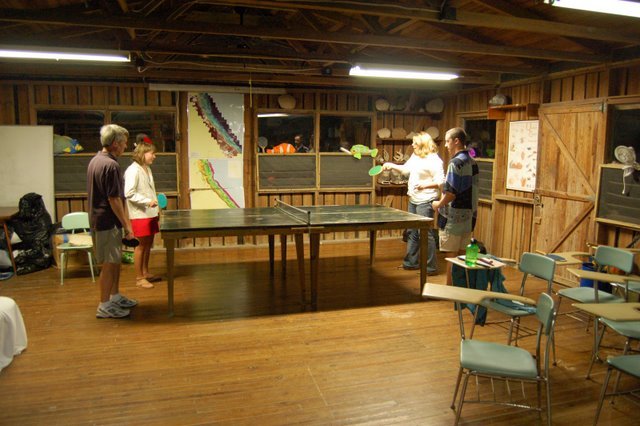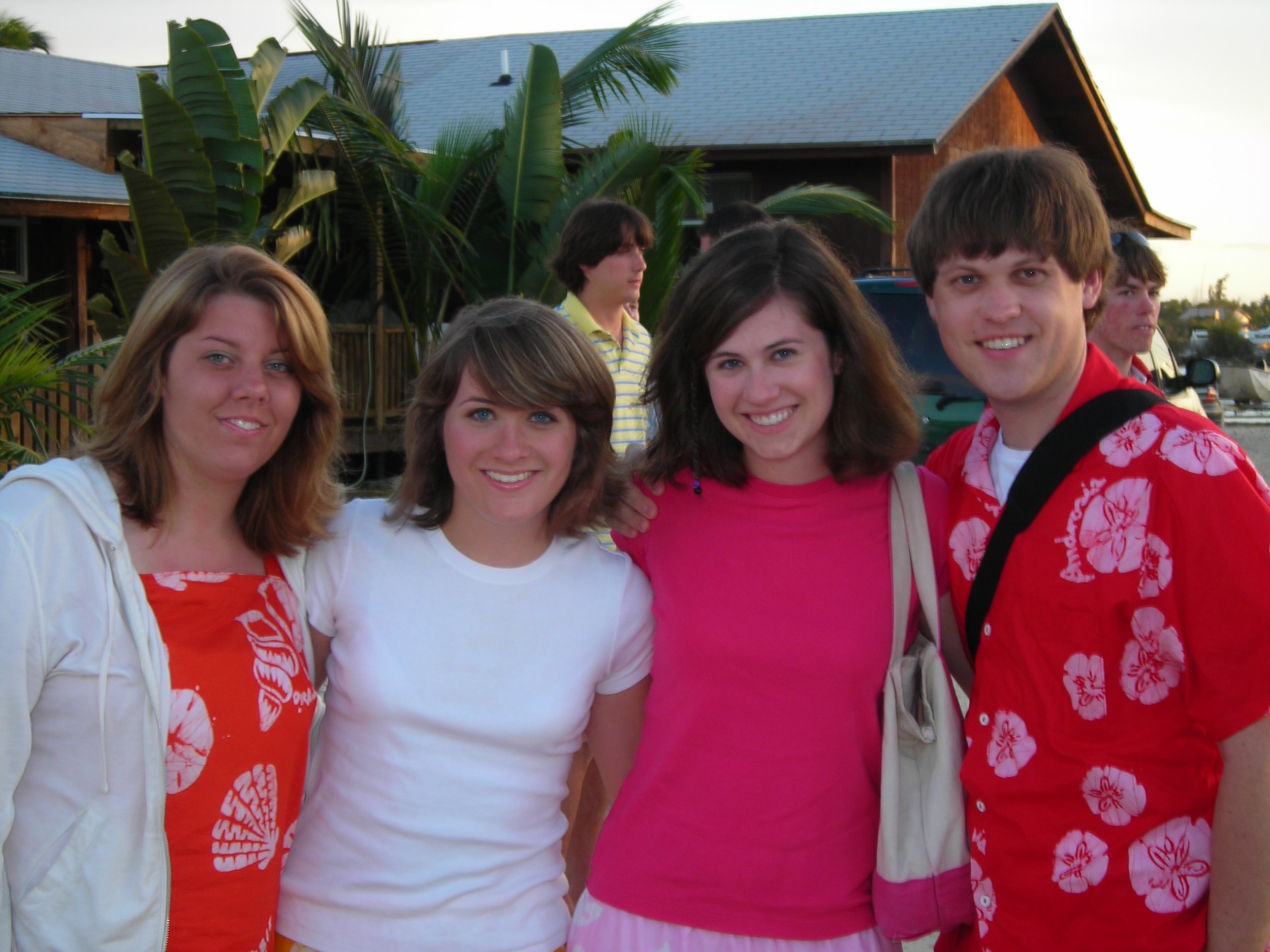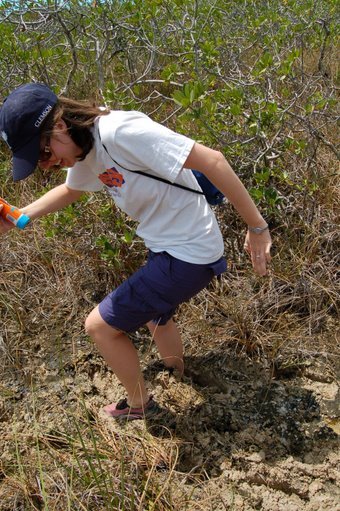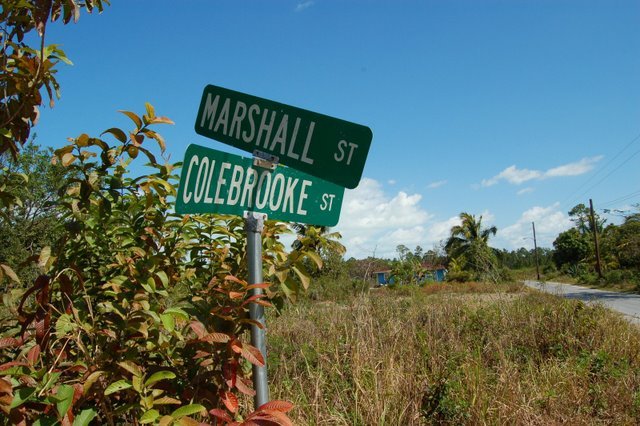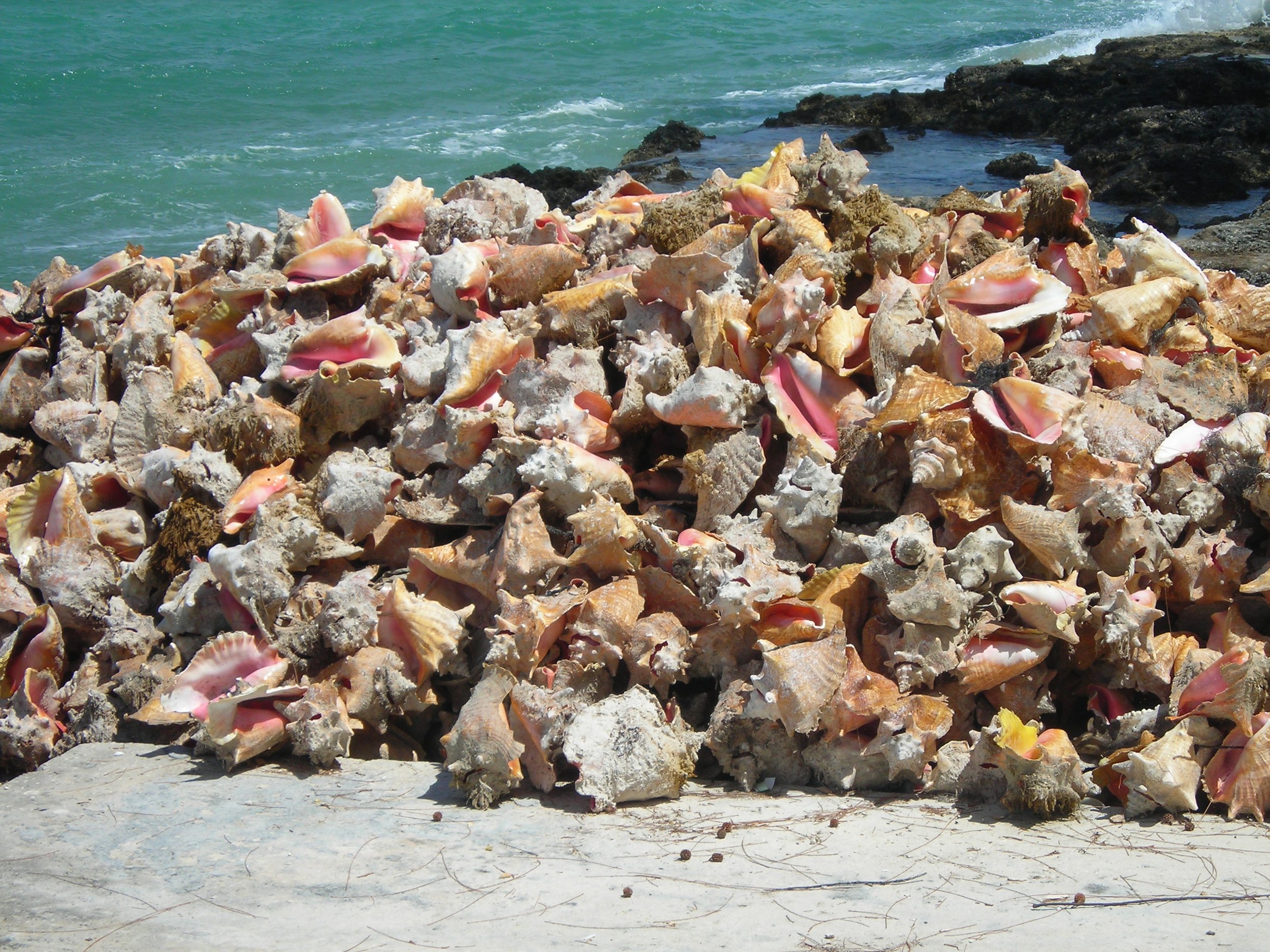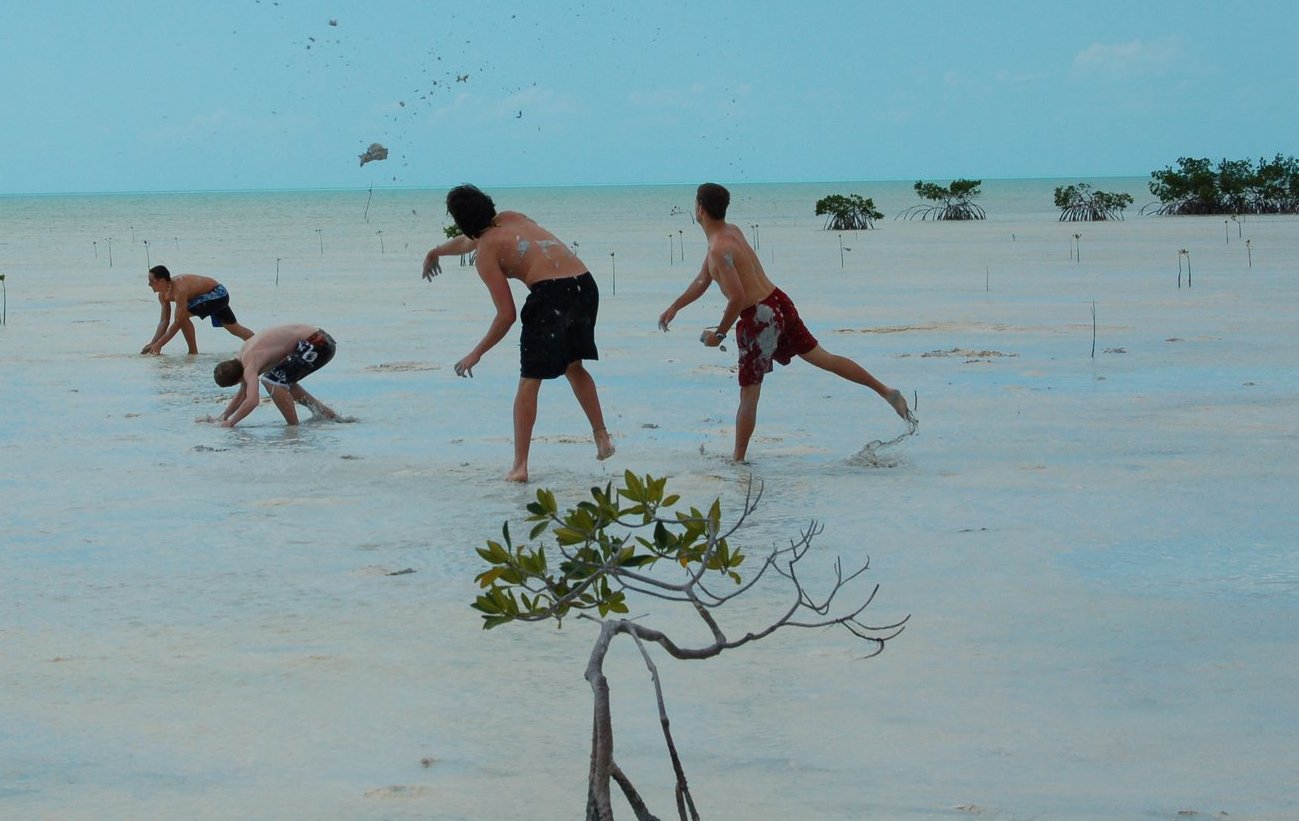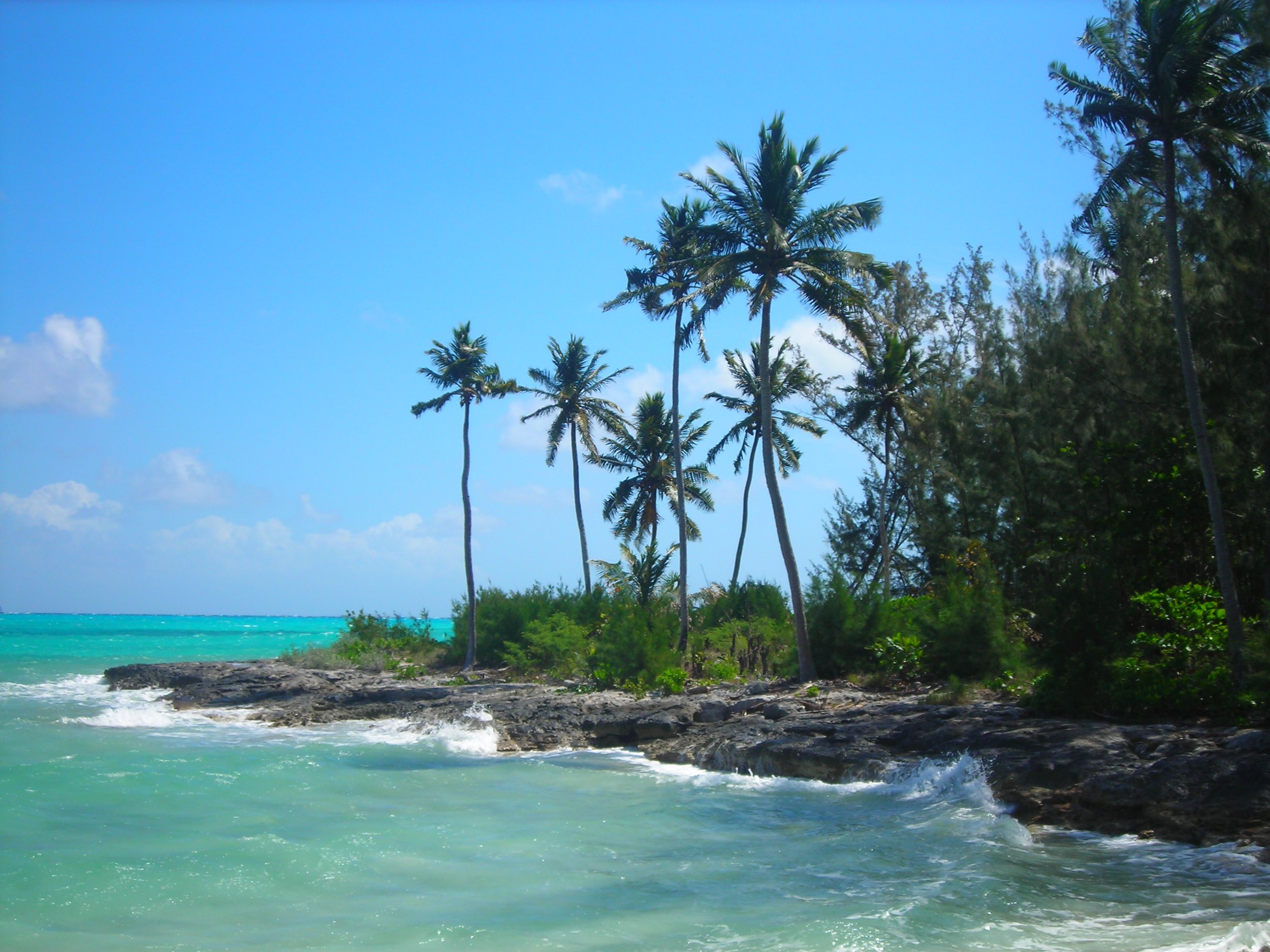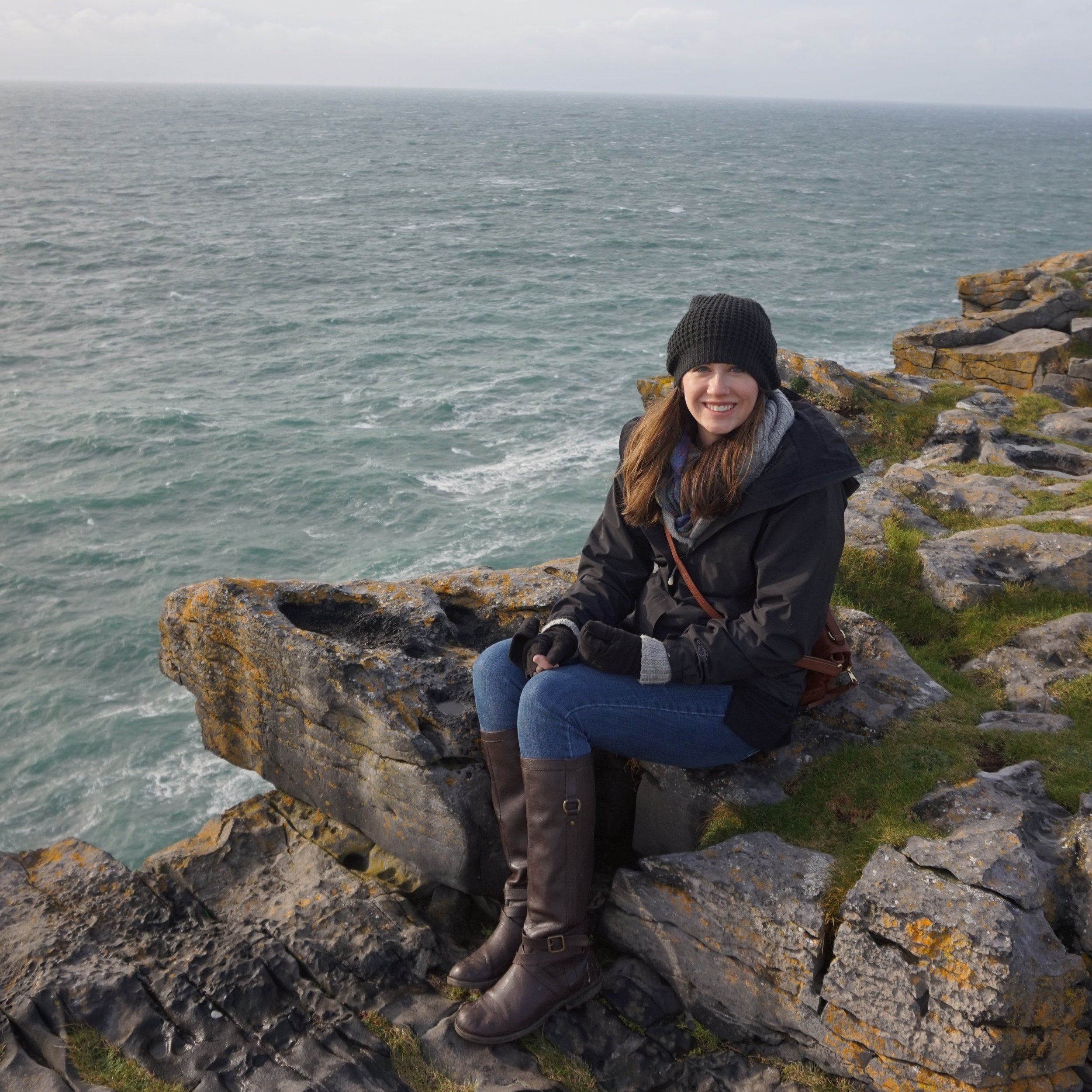Forfar Field Station on Andros, Bahamas: A Complete Guide to Studying Abroad
Forfar Field Station on Andros, Bahamas, is the perfect place to base your marine biology, geology, or other science-based study abroad program.
The older, rustic sign welcoming visitors to the field station
Located on beautiful beachfront property, this field station on rural Andros Island has everything you might need for your home away from home.
I had the privilege of studying abroad here in college, and attended lectures, ate in the dining hall, and explored the beaches on the property.
Below, you’ll find a complete guide to Forfar Field Station, including what you should do to prepare for your time there, what the property is like, and what to expect from Andros in general.
How to Prepare for Your Time at Forfar Field Station
Before we arrived on Andros for our two week field study, I attended a weekly lecture class with my fifteen or so fellow travelers in an honors geology class.
While it was labeled as a geology class, it was truly an interdisciplinary course with elements of marine biology, arts and culture, biology, forestry, and nissology.
Unlike my other study abroad experience in London, where I went to school at a 3rd party institution, my time at Forfar Field Station was a partnership between my home institution, Clemson University, and the researchers at Forfar Field Station.
My professor at Clemson organized the entire trip as he had done many times before. The Bahamas study abroad course is one that is offered about every other year through the Geology department at Clemson.
Because of that built-in partnership, I didn’t have to do as much planning for this experience as I did went to went overseas to London.
Still, you’ll need to ensure that you do a few things before you leave for the Bahamas.
Bring snacks.
Andros Island, especially the area where you’ll find Forfar Field Station, is remote.
Andros is one of the Out Islands, which are a collection of islands that are further off the tourism path from places like Grand Bahama Island and Nassau.
Because there are so few people who live on Andros—only about 6,000 people live in the 2300 square mile island—and there are even fewer people who visit each year, you’re not going to be able to run to the local convenience store every time you want something.
Mrs. Mirley’s, one of the small stores along Queen’s Highway
(Mostly because a local convenience store doesn’t exist.)
In fact, the only ways to get snacks are to
1) go to one of the home markets that locals have in little buildings out front of their houses, which have extremely variable open hours, or
2) stop by one of the small stores that are open on the side of the road to Fresh Creek, which also sell t-shirts and souvenirs.
Neither of these options are going to have a large array of food and drinks, so be prepared to haul over anything you HAVE to have during your stay.
Familiarize yourself with the Bahamas.
Each one of the Bahamian islands has its own cultures, festivals, and traditions. [Click here to learn about the incredible celebrations and festivals of the Bahamas!]
So, just because you stopped in Nassau while on a cruise doesn’t mean that you’re fully prepared to study abroad in Andros.
Before my class left for Forfar Field Station, we completed projects and had ongoing discussions that helped us learn more about the marine life, culture, economy, and wildlife on the island.
In this manner, we knew a bit of what to expect on the island, which allowed us to dive right into our experiences once we were on the ground.
Get your paperwork in order.
PIN ME!
If you’re completing a geology, general science, or marine biology study abroad program here that’s independent of your home college, you’ll need to ensure that the credits will transfer.
I didn’t have to worry about that on this program since the credits were issued through my home university, but I did have to juggle that paperwork for my London study abroad.
Ask your advisor for details on what you’ll need to have those credits from Forfar Field Station count.
Also, it’s incredibly important to have your passport up-to-date and on-hand.
Remember, you will have major issues at customs if you present a passport that’s going out of date within the next 6 months, and you don’t want to delay or be turned away from your study abroad program.
Plan ahead if you need a renewal or if you need to apply for a passport for the first time.
Finally, write down the number and address of the U.S. Embassy in the Bahamas.
While the embassy is on the island of Nassau, about 50 miles away via ferry, you’ll still need this information if you did need to seek out the American authorities for any reason while you’re in the Bahamas.
Get cash.
You can use US dollars or Bahamian dollars while visiting Andros, or you can convert your currency at the airport.
Either way, you’ll want to have a bunch of small bills with you for snacks, tips, and souvenirs.
Credit card usage is going to be extremely limited—and often nonexistent—so bring more cash than you think you might need, just in case.
There aren’t banks on every corner, either, so preparation is the key.
What to Pack to Study at Forfar Field Station
The Bahamas have a wonderful climate year round with temperatures rarely dipping below 70 degrees Fahrenheit in the winter.
You’ll spend a lot of time outside while you’re studying at Forfar Field Station and as you’re adventuring around Andros Island, and your wardrobe should reflect that.
Aim for breezy, functional pieces. Don’t bother with anything remotely dressy as a collared shirt is considered formal here.
There is a washer and dryer available to students at the station, but you won’t want to do laundry constantly. I’d aim to pack around 5 pairs of durable shorts and an equal amount of t-shirts and tanks.
A sun shirt is a must, as you’ll be doing everything from walking across tidal flats to snorkeling in the crystal clear waters. I’d also recommend a hat to further protect your sun.
And along those lines, pack plenty of sunscreen. The Bahamian sun can be brutal, and you don’t want to get burnt and be miserable during your time here.
You’ll also want at least 2 pairs of footwear. The first pair should be a water sandal like a Chaco, Teva, or Keen shoe.
I wore my Keen Newport H2 water sandals while I was there, and they were versatile, taking me from our visits into Fresh Creek to walks along the calcium carbonate beaches.
I found that these closed toed sandals were more protective than the strappy Tevas and Chacos that other members of my cohort wore, but get what feels more comfortable to you.
The second pair should be a completely closed in shoe that you can use for field studies in the local forests and in-land. I brought a sturdy pair of tennis shoes, but others in my group brought hiking boots.
Either will work. Just make sure that whatever you bring is already worn in and comfortable enough to walk a couple of miles in.
If your program is year-round, I’d recommend bringing a pair or two of long pants, preferably something that will dry quickly, like hiking pants.
I’d also bring a sweatshirt for chilly nights and early mornings. My program was in the spring, and I needed a light sweatshirt or jacket a couple of times.
Finally, bring at least 2 bathing suits. So much of the research and work you’ll be doing is on or around water, and you’ll want to be able to trade out suits each day. Otherwise, you’ll be constantly wearing the same wet suit constantly, and that’s just miserable.
Ultimately, you want a wardrobe that is highly functional for both land and sea, and that’s comfortable enough for all of the hiking, swimming, and exploring that you’ll be doing.
My entire cohort at the fossil reef near Nicholls Town (I’m the one in red to the far left)
How to Get to Forfar Field Station
Since Andros is off the typical tourism trail, getting there is much more difficult than getting to Freeport or Nassau.
Here’s what to expect in terms of your transportation, flight over, and customs.
Airports Near Forfar Field Station
Forfar Field Station has 2 airports that are each about 25 minutes away in opposite directions.
Andros Town Airport (ASD) is also called Fresh Creek Airport on the island. It is south of Forfar Field Station. Although it’s technically an international airport, very few people fly through here as it is so small. All of its traffic is through LeAir, which connects the truely international airport in Nassau to Fresh Creek.
You’re much more likely to come through San Andros Airport (SAQ) near Nicholls Town, north of Forfar Field Station. This airport is (slightly) larger and sees more international traffic from the United States.
San Andros Airport from the air
While there are regularly scheduled commercial flights to Andros, they aren’t frequent, so you—and your group if you’re flying in with a school—with likely charter a plane.
Also, keep in mind that you and your luggage will be weighed before you get on the planes. The planes have strict weigh requirements, and you may be told to sit on a specific side of the plane to ensure it stays balanced during the flight.
Another thing the pilots have to consider are the supplies you’ll be taking across. Since Andros doesn’t have a lot of industry (other than tourism) and too poor of soil to do much agriculture, visitors must import much of the food and drinks they need during their visit.
Because of the limited supply of items on the island, the cooks will get inventive so that no food goes to waste. For example, we’d have grits one morning, and the leftovers would be used in a cheesy breakfast casserole the next day.
Flying to Andros Island
Please do not let this plane stop working.
Riding on the 17-passenger plane back home
We flew from Fort Lauderdale to San Andros Airport on 2 privately chartered planes. The first of the 2 planes held about 15 of my cohort, while the second carried the remaining 4 of us over.
My sister and I were in the same cohort, and the pilots split us up, just in case, which did not make us feel great about the flights.
I rode over with 3 of the guys in my class, one of which was christened the co-pilot and given specific emergency procedures should anything happen.
Our pilot on the little plane had just returned to work after a major heart attack, and he wanted to make sure we knew what to do in case he had another one. (This also did not make me feel great about the flight!)
Despite the teeth clenching and seat squirming that occurred on the way over there, I made it to Andros in one piece.
The little plane and I made it to Andros!
The flight, which was only about 45 minutes from Fort Lauderdale, ended with the pilot radioing to the airport to make sure there weren’t any cows on the runway.
You’ll disembark right on the tarmac and walk directly into the customs office.
I don’t tell you this to scare you, but rather encourage you to think about the fact that your Andros adventure will start before you even get there!
Customs in Andros Island
Since the island is so small and receives a limited number of tourists each month, there’s no need for a huge airport or long customs line.
In fact, you’ll go through customs and pick up your luggage all in the same small cinderblock building, which is just steps off of the runway.
All in all, it was one of the easiest international experiences I’ve ever had. The customs officer knew we were coming, and my school had sent ahead much of the paperwork.
The officer did a quick check of our passports, gave us our Bahamas stamp, and we were on our way.
Getting from the Airport to Forfar Field Station
When you walk out of the airport, you’ll likely see at least one taxi waiting around. (If you don’t, have the airport employees on duty call you one. Everyone knows everyone on the island, and they’ll definitely have the on-call taxi guy on speed dial.)
This is your only way to get to Forfar Field Station as far as I’m aware. I never saw any place that you could rent a car, either at the airport or anywhere else we visited on the island.
The taxis aren’t your typical yellow cars like we have in the United States. Instead, the taxis are large vans that are owned and operated by locals.
The taxi drivers know every road and side street on the island, so you just have to describe where you’re going, and they’ll make sure you get there.
They’re also a wealth of knowledge about the island, its history, and anything else you’d want to know, and most are happy to chat on the way.
Take cash for the taxis and be sure to tip.
Once you’re at Forfar, you’ll have access to the property’s vans, in which you’ll be escorted around, usually by one of the station’s annual interns.
We spent a lot of time in the vans exploring the different areas of the island!
What does a typical day at Forfar Field Station look like?
Every day of your time at Forfar Field Station will be a little different as you take off to explore different parts of the island or conduct specific research.
However, your days will have a similar rhythm no matter what you’re undertaking.
Mornings at Forfar
In the mornings, you’ll get ready in your huts. These are directly on the beach with incredible waterviews.
While they are rustic, they’re more than adequate with sets of bunk beds, fans, and electricity (but no A/C).
Each hut sleeps 8 people, who are divided into 2 rooms. Since there’s no A/C, you’ll sleep with the windows open. Each bunk has its own mosquito netting to help keep bugs off of you during the night.
There are also several motel-style rooms, also on the beach. These are where our professors stayed during my session. These are smaller with 3 beds in each. There’s also no A/C here.
When I visited Forfar Field Station, we were one of 2 groups there, so my cohort was split into one areas. About half of my class stayed in the bunks, the professors were in the motel-style rooms, and the rest of the students stayed down Queen’s Highway at the Love at First Sight Motel.
Early morning breakfast at the field station
If your group gets split, there are pros and cons about being placed at the nearby motel. On one hand, you do feel a bit out of the loop as you have to walk to the field station daily. But, the motel does have air conditioning, which is a plus!
You’ll meet for breakfast in the dining hall at Forfar Field Station, which is in the main building.
Each of the buildings at Forfair is made from local materials including wood and limestone. The architecture fits in well with the natural surroundings.
During the Day at Forfar
After breakfast, you’ll get a briefing from your professors and the station’s leaders on what you’ll be doing that day.
The interns, who live at the field station for up to a year, are the ones who shuttle groups around the island and facilitate much of the study abroad experience. You’ll get to know them well, as they will spend the majority of the day every day with your group.
Your time on Andros will be split up between days on the water and days in the field.
For the water days, you might go snorkeling or SCUBA diving, and complete specific marine biology research.
For the on-land days, you’ll likely visit Fresh Creek, Nicholls Town, and the island’s blue holes.
The days we visited the blue holes of Andros Island were some of my favorites.
The geology behind these features is fascinating, and there are so many local legends on creepy things that happened in and around the blue holes.
We also learned about the island’s ties to piracy over at Morgan’s Bluff on the northern end of the island.
You’ll find more history over in Red Bays, where you’ll speak with descendents of Black Seminoles who risked their lives for freedom during slavery in the American South.
A trip to Fresh Creek means a fascinating look at one of the island’s most notable exports at the Androsia Fabric Factory. These vibrant cloths are hand-printed and then dyed before they’re made into skirts, shirts, kitchen towels, and more.
You’ll eat your lunch while you’re out-and-about, and this is typically provided by the field station.
The interns will pack everything you need in a cooler, so all you need to pack is a water bottle. They always carry around a huge 5-gallon water dispenser as well for refills throughout the day.
Nighttime at Forfar
Once we returned from our day’s adventures, you’ll have a little bit of downtime before dinner.
My group would eat dinner together in the dining room at the field station, and then head into the classroom right next door.
We’d sit for a lecture about the next day's activities or for a quiz on what we'd learned during our travels that day.
It was a great time to decompress and review what we’d experienced while comparing it to the book knowledge we’d gained previously.
After the evening lecture, we’d play cards or work on some on-going research. Some of us would hang out in the hammocks outside, chat with the interns, or have a late night snack.
The field station has a tiny shop with chips, sweets, and a few pieces of Androsian fabric clothing. We’d often pick up a delicious and super sweet Goombay Punch to sip while we were hanging out.
Final Notes on the Study Abroad Experience at Forfar Field Station
I’m so glad that I decided to complete a second study abroad program while I was in college as it was completely different than my European experience.
While the location of the field station on Andros makes this feel like it will be a beach vacation, you’ll end up having an immersive learning experience like none other.
Since my time there, I can’t go to a beach without thinking about some tidbit that I learned while at Forfar, and I’d love to go back one day.
While I went to Forfar Field Station with a college group, the property welcomes visitors from all stages of life.
They tailor make custom trips for students in middle school all the way to graduate school.
If you're a teacher or administration at any level in school, you can arrange a stay at Forfar for your students. They tailor each group's itinerary to their needs. Groups can stay in the huts onsite and eat in the cafeteria in the main lodge.
There’s also an amazing Marine Biology program for young adults aged 18-24. This 6 week program counts towards your college credits, too!
They also offer ongoing study opportunities for adults not associated with a school, including kayaking trips, arts and geology workshops, and SCUBA trainings.
Ultimately, my time at Forfar Field Station remains one of the highlights of my college experience. Andros is such an incredible place, and the staff at Forfar are dedicated to helping their visitors see every aspect of the island.
Forfar Field Station is definitely rustic, but that's part of its charm.
The wooden cabins, Androsia fabric curtains, and easy going staff made our time there feel more like grown up summer camp than a college class field study.
If only every day at college had been that way!




